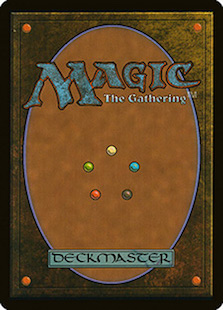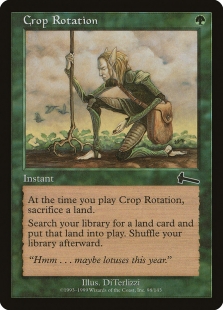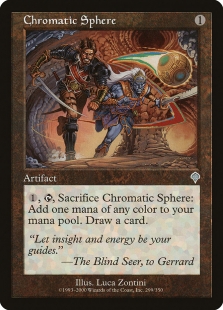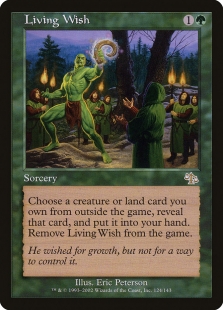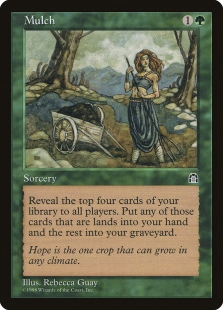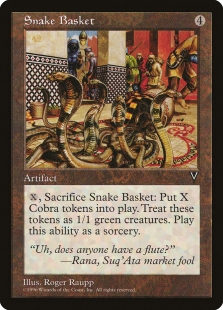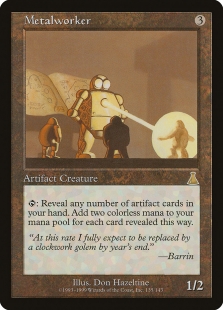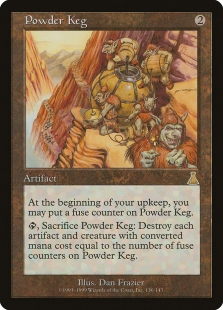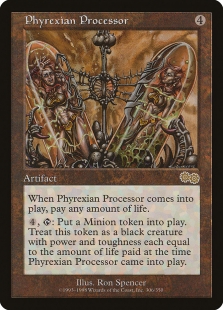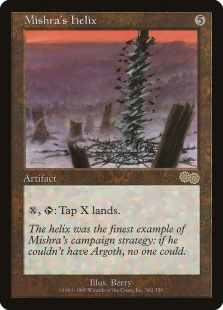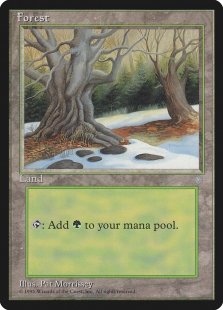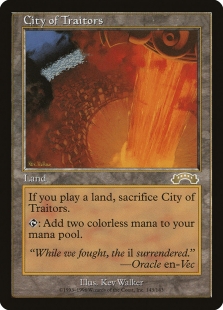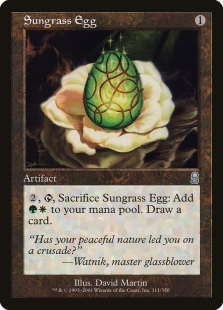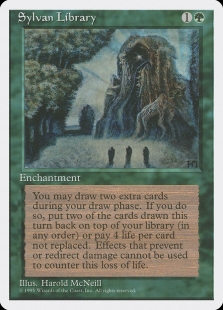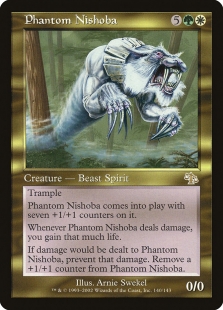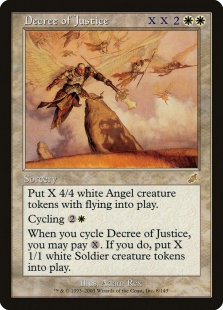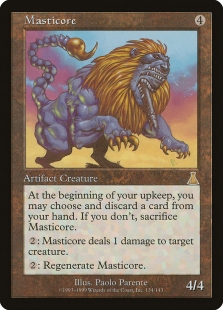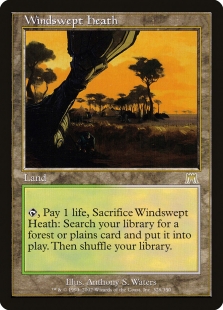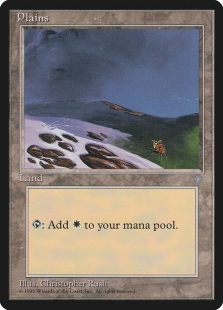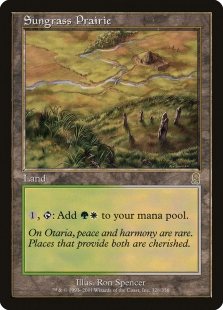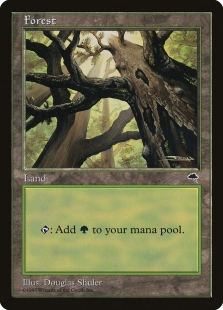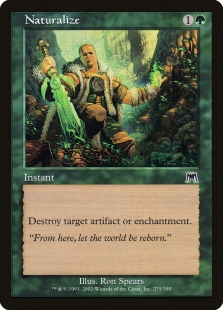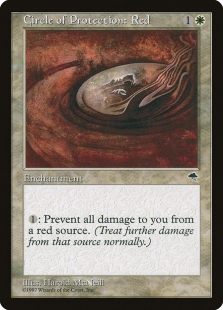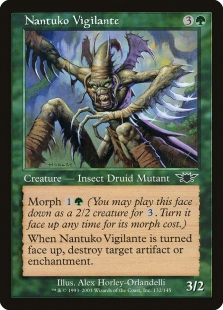Today we have a guest post about Tron by Aleksi Väänänen from Finland. Enjoy! / Martin
I’m Aleksi Väänänen—a Finnish player and deck brewer. Last weekend my friend and teammate Sakari Castrén played a GW Urzatron deck in the Swedish Nationals and was asked to write a blog post about the deck. As I’m the person responsible for building this silly deck we decided to join forces and write this as a two-part article. In the first part I will cover the deck building process and card choices and in the second part Sakari will explain some of the strategy and cover the matches in the tournament.
Sakari is no stranger to playing Tron decks. For example here is a somewhat historical list from an event right after Darksteel came out, with which Sakari qualifed for Nationals in 2004:
Tron: Sakari Castrén 4 Oblivion Stone 4 Talisman of Impulse 4 Oxidize 4 Mindslaver 3 Fireball 3 Pyroclasm 4 Reap and Sow 4 Sylvan Scrying 4 Tooth and Nail 2 Darksteel Colossus 2 Platinum Angel 4 Forest 1 Mountain 4 Shivan Oasis 1 Stalking Stones 4 Urza's Mine 4 Urza's Power Plant 4 Urza's Tower Sideboard 4 Defense Grid 2 Planar Portal 1 Darksteel Colossus 2 Duplicant 4 Dwarven Blastminer 1 Fireball
As Tron has been a modern staple for years I took a stock modern list as a starting point to see the average amount of lands, tutors, threats etc and then turned to the Premodern card pool to see what kind of shell was possible. I also tried to find older standard versions for reference.
This approach meant I had to find alternatives to Sylvan Scrying, Ancient Stirrings and Expedition Map. The most powerful Premodern option was Crop Rotation, but after that it got pretty tricky. My second option was Sylvan Library, but the first version of the deck lacked suitable amount of tutors and shuffle effect, so I cut it. Mulch was something I decided to try as it had decent chance of hitting lands. The final piece of tech was the idea to use Living Wish, which also doubles as a threat.
The basic shell included 19 lands, about 14–15 threats and some removal and disruption. The first version was this mono green monstrosity:
The threats are really lacking in power level and I totally missed the importance of Masticore here.
After that I decided to look for options in Gx combinations, but I found that the manabase was impossible to build with black or blue. Red gives you cards like Kaervek’s Torch, Fireball, Ghitu Fire, Urza’s Rage, Pyroclasm, Lightning Bolt and maybe Flametongue Kavu. The problem was still the threats, though. The optimal cost for threats would be 6–7 colorless mana, but there just aren’t any good options for artifact creatures and most of the colored creatures are also quite terrible. Even remotely considerable cards include stuff like Aladdin’s Ring, Scaled Wurm, Xanthic Statue, Crash of Rhinos, Verdant Force, Avatar of Hope, Tunneler Wurm, Akroma, Angel of Wrath, Elder Land Wurm, Mishra’s War Machine, Bronze Horse, Seraph, Ebony Rhino, Spike Hatcher, Phyrexian Colossus, Flowstone Thopter, Roar of the Wurm, Angel of Retribution, Crowd Favorites, Enormous Baloth, Tetravus, Icatian Town, Phyrexian Hulk, Planar Portal, Nemata, Grove Guardian, Nut Collector etc etc—so there is a clear problem.
The card which stood out from the rest was Phantom Nishoba. It is seven mana and two colors but could come down on turn three with Sungrass Egg. White also made a tutor package possible with Enlightened Tutor, as well as providing cheap removal and the best X spell. This was the second iteration of the deck:
This version was a lot better. The mana base was still good. Sungrass Egg was a lot better than Barbed Sextant. The fetches and tutors made Sylvan Library playable. The threats were better and you even had a variety of answers to things. After some testing, Sakari suggested cutting Enlightened Tutor and just playing more of the most poweful cards. Triskelion was just bad against everything, Snake Basket was worse than Decree of Justice, Phyrexian Processor was unreliable and Nevinyrral’s Disk was too slow. Also, we came to conclusion that Sylvan Library was just strictly better than Mulch so we cut those althogether. Most of the test games were decided by resolving Mishra’s Helix or by overpowering the board with Masticore and Phantom Nishoba. Decree of Justice was of course great against control, but also could be used to buy more time versus aggressive decks.
One of the critical improvements for the manabase was to add Sungrass Prairie. You really don’t want more than one, though, as you can’t use it to cast Swords to Plowshares on Goblin Lackey on turn 1, and neither do want to draw multiples. One Sungrass Prairie is enough, however, as the main idea is to fetch it with Crop Rotation after assembling Tron, in order to power out Phantom Nishoba. It also gives you the option to play multiple colored spells on the same turn.
My general approach to building new Premodern decks is to have solid plan against UW control, Sligh, the Rock and some form of combo. As the variety of decks is huge, there will always be stuff you can’t prepare for. This makes consistent linear strategies the best choice at the moment. Here is the final version of the deck that Sakari ended up playing:
With this version, you have solid plans against your main enemies. The Rock and other green midrange decks struggle against Masticore. Against red decks, you have Swords to Plowshares, Phantom Nishoba, Masticore and Teroh’s Faithful. Against control you try to overpower them with abundant threats and big Decree of Justice. The deck is super soft against Bargain Combo, however, but even there you can get lucky and lock them with Mishra’s Helix and well timed removal. Prison decks are also tough, as Winter Orb, Smokestack and Tangle Wire are very effective at disrupting your game.
In an average modern Tron deck you have about 14–15 threats. This deck has 4 Mishra’s Helix, 3 Phantom Nishoba, 4 Decree of Justice and 4 Masticore, i.e. a total of 15 threats. On top of that there are the Living Wishes, but most of the time they fetch Tron pieces. In a more aggressive metagame I could see cutting one Sylvan Library and either one of Masticore, Phantom Nishoba or Decree of Justice (whichever you prefer), replacing them with two Wall of Blossoms. My preference would be to move one Masticore to the sideboard so you could wish for it if needed. Drawing two Sylvan Library is of course a liability, but you don’t have Ancient Stirrings or any other card draw and you always want to draw one, so I suggest starting with four and cut one if you feel like it is too much.
We also tested Glowrider, Nova Cleric and Triskelion in the board but we suspected that Glowrider is too slow against combo, and it also happens to hurt your own game plan. Nova Cleric might be decent if you expect a lot of Enchantress decks
In general I think that Wishes are vastly underplayed at the moment. Living Wish is the closest thing to a Vampiric Tutor in The Rock. And without Brainstorm and Ponder, I think that UW control could opt for Cunning Wish instead of playing metagame dependent one-off answers.
Thanks for reading! Comments are welcome!
Aleksi Väänänen, so_not on Discord
Sakari Castrén, kasta on Discord
